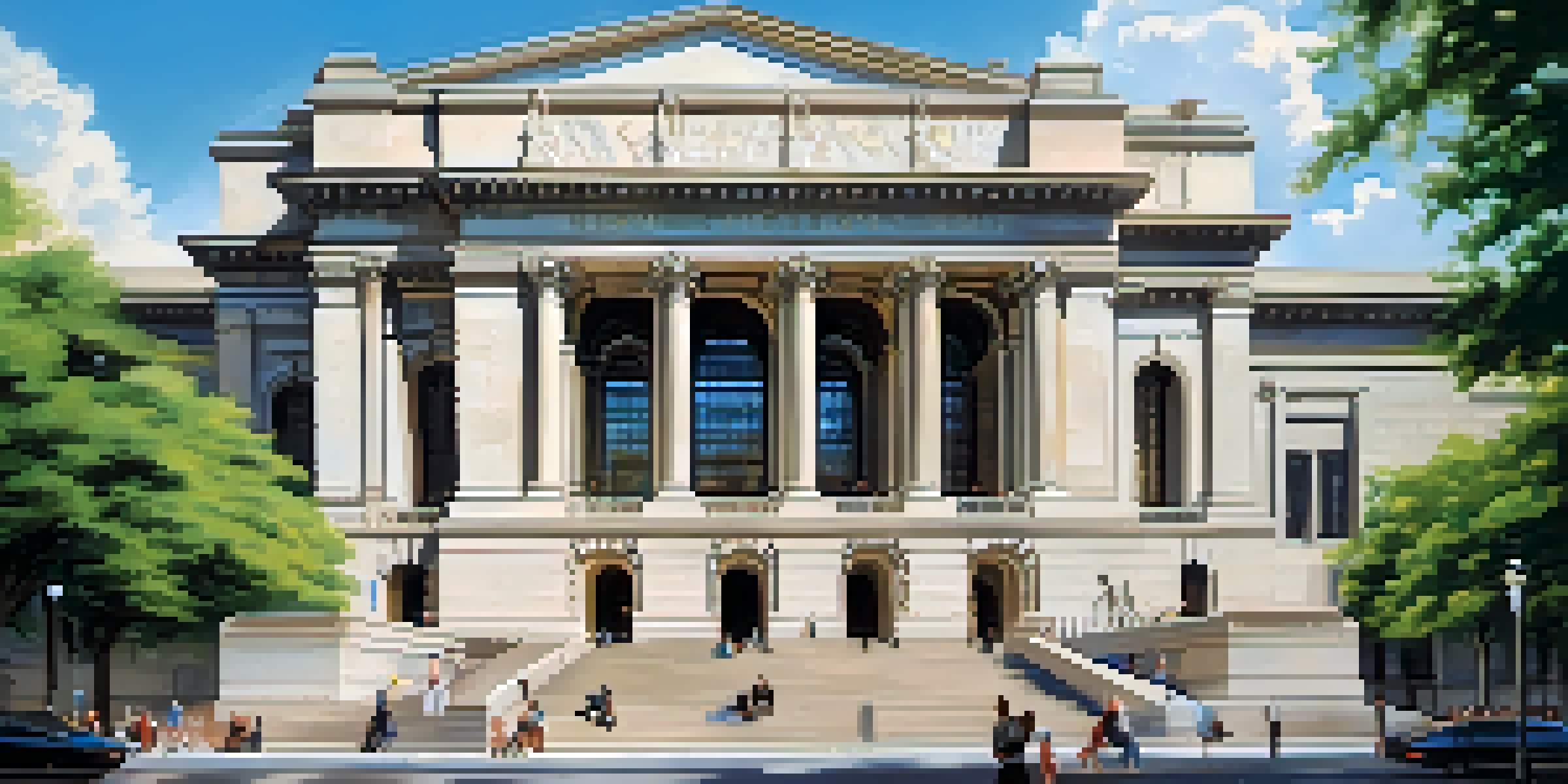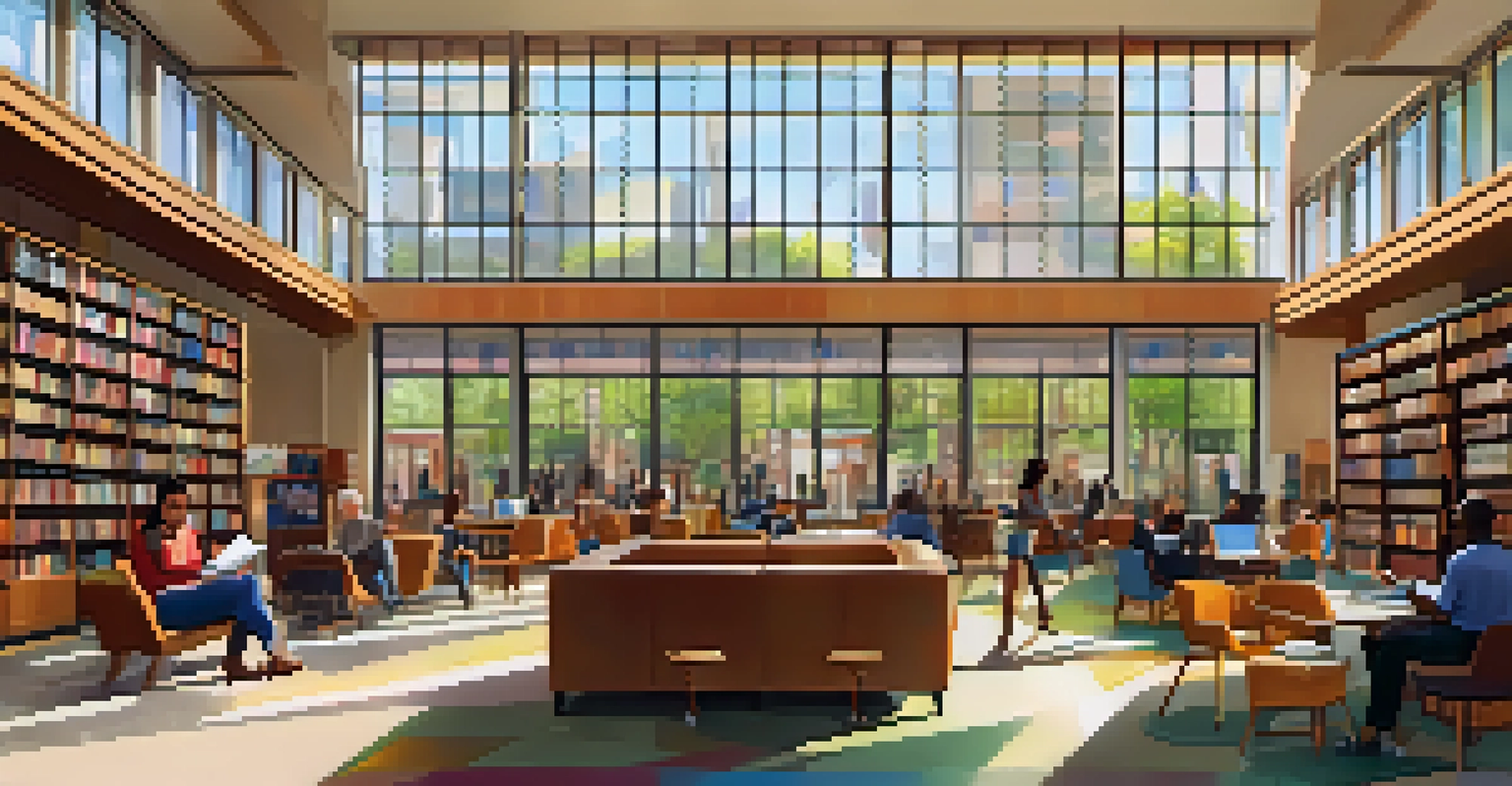Exploring the History of Public Libraries in New York City

The Early Beginnings of Public Libraries in NYC
The concept of public libraries in New York City traces back to the 18th century. The first significant library was founded in 1754 by a group of well-educated men known as the Library Company of New York. While it started as a subscription-based model, it laid the groundwork for what would become public access to books and information.
A library is not a luxury but one of the necessities of life.
In the early 19th century, the idea of free public libraries began to gain momentum. Influential figures like philanthropist James Lenox and the establishment of the New York Society Library played crucial roles in promoting reading and literacy among the masses. These early institutions sparked a growing belief that knowledge should be accessible to all, not just the elite.
By the mid-1800s, the idea of public libraries took a firm hold in the city. The establishment of the New York Public Library (NYPL) system in 1895 marked a significant turning point, as it consolidated various collections and aimed to serve the diverse population of New York City.
The Role of Andrew Carnegie and Library Expansion
Andrew Carnegie, the Scottish-American industrialist, played a pivotal role in expanding public libraries across the United States, including New York City. In the early 1900s, Carnegie donated over $5 million to build new library branches in NYC, believing that access to knowledge was vital for a thriving democracy.

His contributions led to the establishment of numerous branch libraries, many of which still serve communities today. These libraries were designed to be welcoming spaces, featuring beautiful architecture and ample resources, making them a cornerstone of neighborhood life.
Public Libraries' Rich History
The evolution of public libraries in NYC began in the 18th century, culminating in the establishment of the New York Public Library system in 1895.
Carnegie's vision helped transform the landscape of public libraries, ensuring they were not just repositories of books but also community hubs. This commitment to accessibility has had a lasting impact, encouraging generations of New Yorkers to engage with literature and learning.
Architectural Marvels: Notable NYC Libraries
One cannot discuss NYC's public libraries without mentioning the iconic New York Public Library on Fifth Avenue. Completed in 1911, its grand Beaux-Arts architecture and stunning Rose Main Reading Room have made it a symbol of knowledge and culture in the city.
The only thing that you absolutely have to know is the location of the library.
Another remarkable structure is the Brooklyn Public Library, designed in the Art Deco style. Its unique design and commitment to local culture reflect the diversity of the borough, making it a cherished community resource.
These architectural masterpieces not only house vast collections of books but also serve as venues for cultural events, exhibitions, and educational programs, reinforcing the role of libraries as vital public spaces.
The Impact of Technology on Public Libraries
As technology evolved, so did the role of public libraries in New York City. The introduction of computers and the internet in the late 20th century transformed how patrons accessed information and educational resources. Libraries began offering free internet access, digital databases, and online catalogs, making them more relevant than ever.
Today, libraries are embracing new technologies like e-books and digital media. Many patrons can now borrow e-books and audiobooks from home, expanding their access to literature without stepping foot inside a building.
Carnegie's Lasting Impact
Andrew Carnegie's generous donations in the early 1900s significantly expanded public library access, transforming them into community hubs.
This shift towards technology ensures that NYC's public libraries continue to meet the needs of a diverse and tech-savvy population, highlighting their adaptability and relevance in a rapidly changing world.
Libraries as Community Hubs: Programs and Services
Beyond lending books, NYC public libraries offer a plethora of programs and services that cater to community needs. From literacy classes to job search workshops, these libraries serve as vital resources for personal and professional development.
Storytime sessions for children, author talks, and cultural events foster a sense of community and promote lifelong learning. Libraries have become essential spaces where people of all ages can gather, learn, and connect.
In a bustling city like New York, libraries provide a sense of refuge and belonging, proving that they are more than just places for books—they're integral to the social fabric of the community.
Challenges Faced by Public Libraries
Despite their many successes, NYC public libraries face several challenges in the modern age. Budget cuts and funding issues have posed significant threats to library services, affecting staffing and resources. Advocates for libraries often rally to protect these essential institutions from financial strain.
Additionally, the digital divide remains a pressing concern. While libraries have made strides in offering technology access, not all communities have equal access to digital resources, which can hinder the library's mission of inclusivity.
Libraries Adapt to Technology
Modern NYC public libraries are embracing technology, offering digital resources and programs to meet the needs of a diverse, tech-savvy population.
These challenges highlight the ongoing need for support and advocacy to ensure that public libraries can continue to thrive and serve their communities effectively.
The Future of Public Libraries in NYC
Looking ahead, the future of public libraries in New York City is both exciting and uncertain. As they adapt to the ever-changing landscape of technology and community needs, libraries are likely to continue evolving their services and offerings.
Innovations such as makerspaces, digital literacy programs, and community engagement initiatives are on the rise, reflecting the libraries' commitment to staying relevant. These endeavors will help attract younger generations and ensure that libraries remain vital resources.

Ultimately, the future of NYC's public libraries will rely on their ability to foster inclusivity, innovation, and a love for learning, ensuring that they continue to be cherished community hubs for years to come.